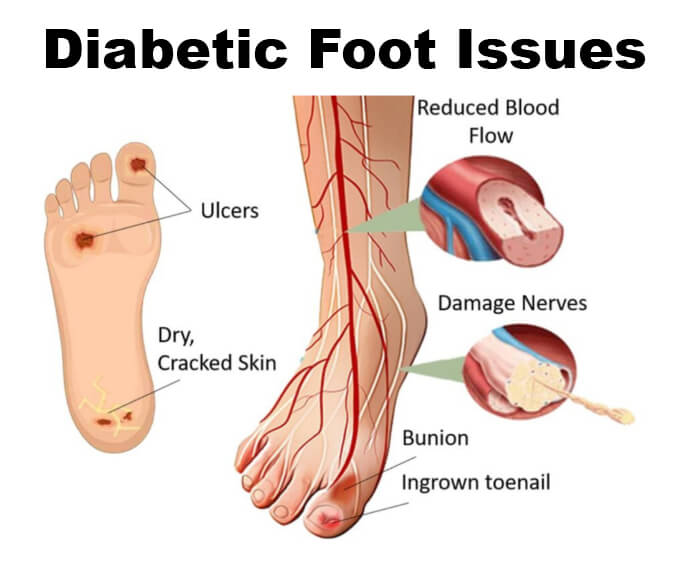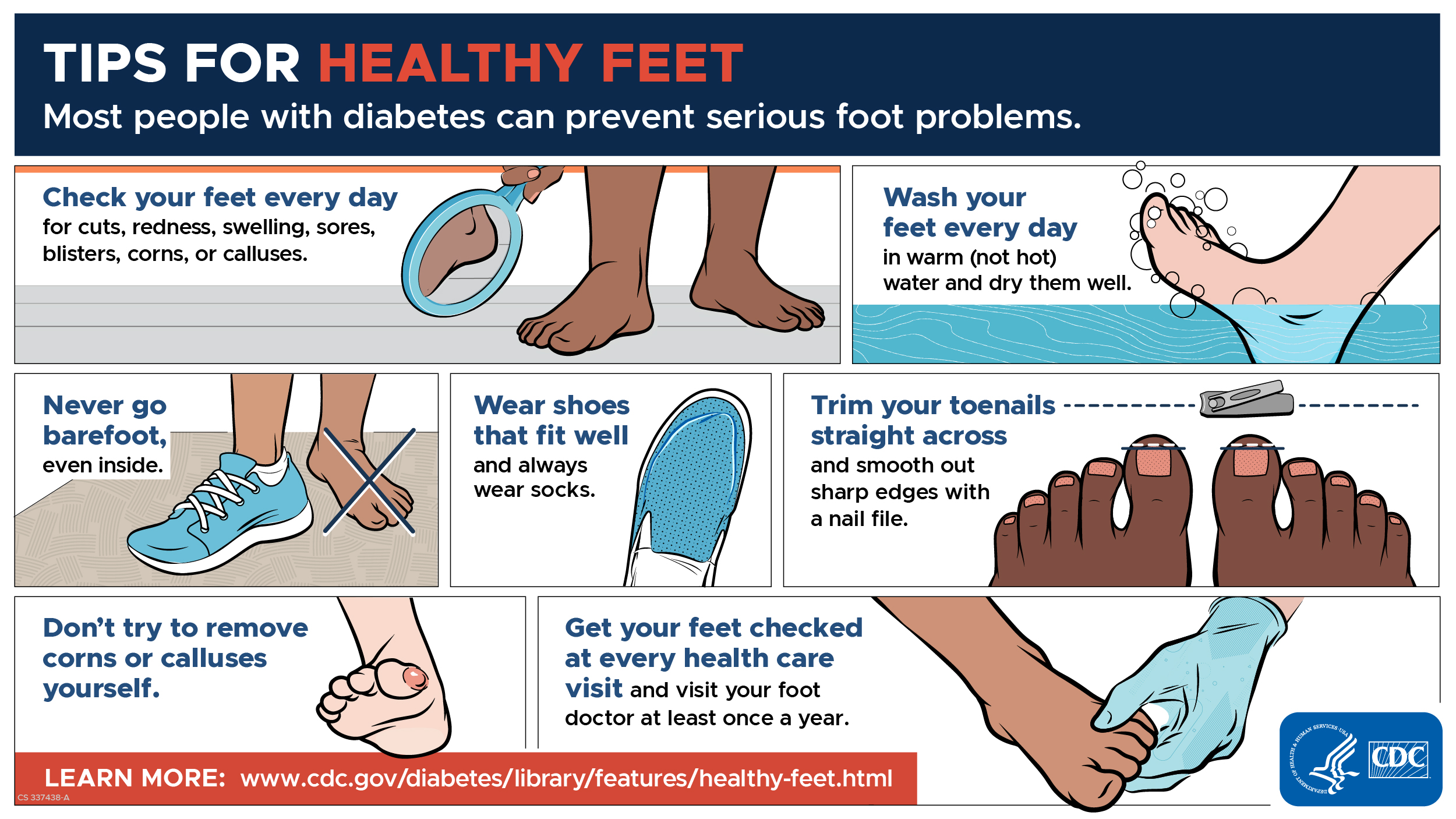Importance of Diabetic Foot Care
With over 29 million Americans diagnosed with diabetes and an additional 80 million classified as pre-diabetic, the impact of this condition on health and well-being is significant. Despite advances in treatment and management, complications from diabetes, including those affecting the feet, remain prevalent. It is estimated that one in four individuals with diabetes will experience foot-related issues, underscoring the importance of proactive care and prevention.

Foot complications are a significant concern for individuals with diabetes, leading to a higher risk of atraumatic lower extremity amputations and being a common reason for hospitalization in the United States. These complications often stem from neuropathy, or loss of sensation in the feet, which can cause minor injuries like sores or cuts to go unnoticed and potentially lead to severe infections requiring extensive medical and surgical intervention.
Seeking Professional Care
If you have diabetes and experience any foot-related concerns, it’s essential to seek prompt medical attention from a qualified healthcare provider, such as a podiatrist specializing in diabetic foot care. Early intervention and comprehensive management can significantly reduce the risk of complications and improve outcomes for individuals with diabetic foot conditions.
For personalized diabetic foot care and limb salvage strategies, contact Austin Foot & Ankle Center today to schedule an appointment with our experienced podiatrists.
Strategies for Healthy Feet Amidst Diabetes
Your feet are particularly vulnerable to the complications of diabetes, but there are effective steps you can take to minimize risks and maintain foot health:

Manage Blood Sugar Levels
Maintaining control over your blood sugar is crucial. Effective management reduces the risk of serious complications, highlighting the importance of adhering to your diabetes care plan.
Daily Foot Inspections
Regularly inspect your feet for any signs of cuts, blisters, swelling, or redness, regardless of the presence of pain. Any abnormalities should be reported to your foot and ankle surgeon for evaluation, even if they seem minor.
Foot Hygiene and Care
Treat your feet with the same care you would give your face. Wash them in warm (not hot) water and ensure they are thoroughly dried afterward. Adopt the habit of wearing new socks daily and avoid walking barefoot to prevent injuries.
Professional Care for Corns, Calluses, and Nails
Do not attempt to trim corns, calluses, or nails on your own. These procedures should be handled by a healthcare professional to avoid risking injury or infection.
Choose Appropriate Footwear
Wear shoes that fit well and offer proper support. Always check inside your shoes for foreign objects before wearing them, as unnoticed items can cause wounds.
Regular Foot Exams
Schedule regular foot exams with your foot and ankle surgeon, who will recommend a tailored schedule for check-ups to help prevent future complications.
Limb Salvage
For individuals with diabetes, proper foot care is essential to prevent complications that can lead to serious consequences, including the risk of limb amputation. Limb salvage is a crucial aspect of diabetic foot care, focusing on preserving the lower limb and preventing the need for amputation in cases where severe infection, ulceration, or tissue damage threatens the foot or ankle.
Diabetes can lead to neuropathy (nerve damage) and peripheral arterial disease (poor blood circulation), increasing the risk of foot ulcers and infections. Limb salvage strategies are employed to address these complications and maintain the functionality and quality of life for patients.
Comprehensive Approach
Limb salvage in diabetic foot care involves a multidisciplinary approach, which may include:
- Wound Care: Proper management of foot ulcers through debridement, cleaning, and dressing changes to facilitate healing.
- Antibiotic Therapy: Treatment of infections with appropriate antibiotics to prevent further spread and complications.
- Vascular Interventions: Procedures to improve blood flow to the affected limb, such as angioplasty or bypass surgery, to promote healing.
- Surgical Debridement: Removal of dead or infected tissue to prevent the spread of infection and promote wound healing.
- Offloading Techniques: Redistribution of pressure on the foot to relieve areas of high stress and prevent the formation of ulcers.
- Diabetic Foot Education: Patient education on proper foot care, including daily inspection, hygiene, and footwear selection to prevent future complications.
Goal of Limb Salvage
The primary goal of limb salvage in diabetic foot care is to preserve the affected limb, maintain mobility, and improve the patient’s overall quality of life. By addressing complications early and implementing appropriate interventions, healthcare providers can help prevent the need for amputation and promote long-term foot health in individuals with diabetes.
Partner with Austin Foot & Ankle Center for Diabetic Foot Care
At Austin Foot & Ankle Center, we specialize in providing comprehensive care for individuals with diabetes to manage and prevent foot-related complications. Our team of experts is dedicated to supporting you through every step of your diabetic foot care journey, from preventive measures to treatment of any arising issues.
Don’t wait for complications to arise. Contact Austin Foot & Ankle Center today to schedule your foot exam and consultation. We’re committed to helping you maintain healthy feet, ensuring you can live a full and active life without the worry of diabetic foot complications. Let us be your partner in diabetic foot health.

